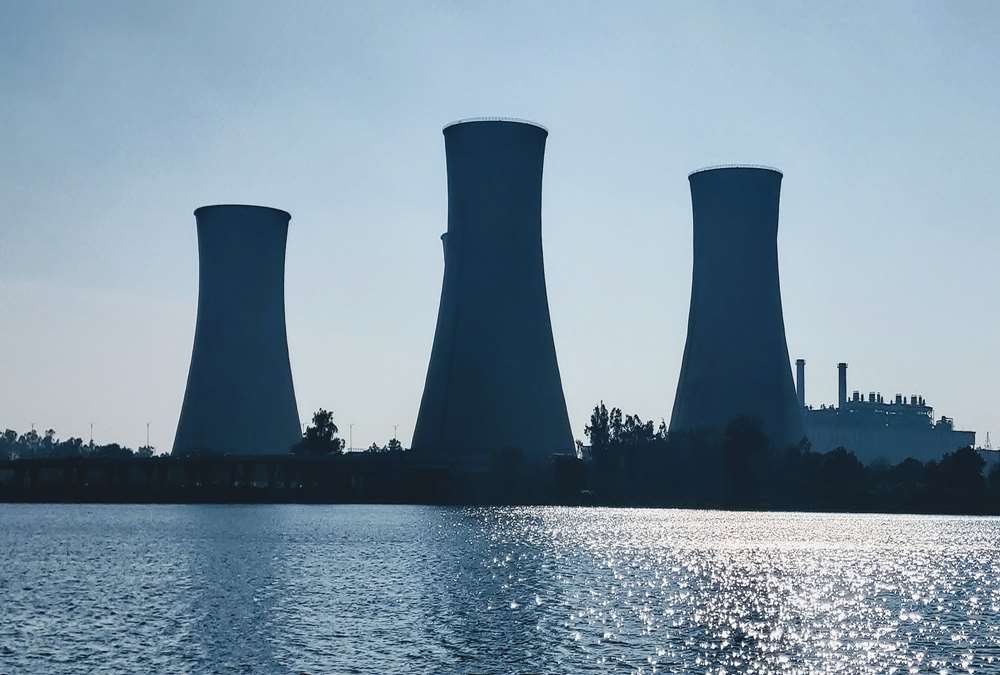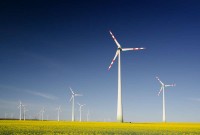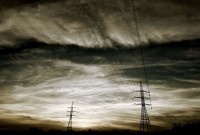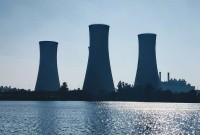- Home
- Business Processes
- Industry Knowledge
- Aerospace Industry
- Automotive Industry
- Banking Domain
- BFSI Industry
- Consumer/ FMCG Industry
- Chemicals Industry
- Engineering & Construction
- Energy Industry
- Education Domain
- Finance Domain
- Hospitality Domain
- Healthcare Industry
- Insurance Domain
- Retail Industry
- Travel and Tourism Domain
- Telecom Industry
- Leadership Skills
- eLearning
- Home
- Domain Knowledge
- Energy Industry
- The Nuclear Power Industry
The Nuclear Power Industry
Nuclear power is the use of sustained nuclear fission to generate heat and electricity. Nuclear power plants provide about 6% of the world's energy and 13–14% of the world's electricity, with the U.S., France, and Japan together accounting for about 50% of nuclear-generated electricity. In 2007, the IAEA reported there were 439 nuclear power reactors in operation in the world, operating in 31 countries.
A Brief History of the Nuclear Power Industry
The 60-year history of commercial nuclear power has been punctuated by dramatic policy changes. The first 20 years, marked by limited public participation, tight government control, and promises of clean, abundant energy, were followed by a period of intense social and political conflict over the technology's environmental and safety implications. Nuclear policy in the United States and most European nations shifted from all-out support to a more ambivalent posture, which led to a dramatic slowdown in the construction of new plants.
Scientists in the former Soviet Union and in the West who developed nuclear weapons in World War II and in the early days of the Cold War realized that the tremendous energy produced by nuclear fission could be tapped either for direct use or for generating electricity. It was also clear that nuclear fission energy would allow the development of compact, long-lasting power sources that could have various applications, including powering ships, especially submarines. From their roots in naval nuclear power programs, light water reactors have become an important source of electric power in many countries.
In the late 1960s, the costs of producing electricity from coal and nuclear plants were comparable; nuclear plants were more expensive to build but had lower fuel and operating costs. By the early 1970s, utilities were ordering roughly equal amounts of coal and nuclear capacity. Within a few years, though, the bottom fell out of the market, sparing no sector of the industry. Significantly, nuclear power began its demise well before the accident at Three Mile Island in March 1979. Orders for new nuclear plants actually began to decline in 1974, and no orders would be placed after 1978. Furthermore, between 1974 and 1984, utilities canceled plans for over 100 reactors, many of which were already under construction. Some of the abandoned reactors were more than 50% complete.
Light water reactors built over the past 30 years continue to generate electricity, and new reactor Nuclear power plant development plans have mostly been put on hold for further debate, however, following major nuclear accidents at power plants such as Chernobyl, Russia, in 1986 and the radiation leaks that occurred at Fukushima in Japan after the tsunami in 2011.
The generation of nuclear energy begins with uranium mining and milling. These activities are at the ‘‘front end’’ of the nuclear fuel cycle. The cycle continues through conversion and enrichment and fuel fabrication for light water reactors (natural uranium is fuel for heavy water reactors), with each of these operations having associated costs. The ‘‘back end’’ of the cycle includes spent nuclear fuel (SNF) management, reprocessing, and high-level radioactive waste disposal.
Nuclear Reactor Fuel
Successful nuclear fuel must meet the requirements set forth by the nuclear reactor design team. These requirements include considerations of safety, economy, and ease of reprocessing or disposal.
Nuclear fuel development has progressed remarkably over the past 50 years. The fuel residence times in the reactors have increased by more than a factor of 20 and the reliability has increased by several orders of magnitude. Fuel is a small cost of generating power from a nuclear reactor as opposed to fuel costs from other fossil fuel energy technologies. Nuclear fuel design and fabrication techniques will continue to evolve, with their evolution driven by economics and new uses for nuclear energy.
Nuclear Fuel Reprocessing
Nuclear fuel reprocessing is the separation of irradiated nuclear fuel into potentially useful product materials and waste. The separation is accomplished by a combination of mechanical, chemical, and physical processes. Conservation of uranium resources and improved management of radioactive waste are the two primary motivations for reprocessing. In principle, almost all of the constituents of irradiated nuclear fuel can be recycled for some further use. In practice, only the recycling of plutonium and uranium have been of commercial interest.
Nuclear Power around the World
There are now 442 nuclear plants in operation worldwide, with an additional 35 under construction. Nuclear power provides about 17% of the world’s electricity. Thirty nations now have nuclear reactors, with the vast majority located in the Organization for Economic Cooperation and Development (OECD) nations, where nuclear power accounts for almost 24% of all electricity. According to the Nuclear Energy Institute, the top 10 nuclear-generating nations are, in order, the United States, France, Japan, Germany, Russia, South Korea, United Kingdom, Canada, Ukraine, and Sweden. Nuclear power provides more than 75% of total electricity production in Lithuania and France, more than 50% in Belgium and Slovakia, more than 40% in Ukraine, Sweden, and Bulgaria, and about 30% in 10 other nations. The United States, with 104 operating reactors, has the most; France has 59 and Japan has 54. Japan also has plans to build up to 10 additional plants in the next few years.
Related Links
You May Also Like
-
The modern electric power industry covers the generation, transmission, distribution, and sale of electric power to the general public and industry. The commercial distribution of electric power started in 1882 when electricity was produced for electric lighting. In the 1880s and 1890s, growing economic and safety concerns lead to the regulation of the industry. What was once an expensive novelty limited to the most densely populated areas, reliable and economical electric power has become an essential aspect for normal operation of all elements of developed economies!
-
These industries include petroleum industries (oil companies, petroleum refiners, fuel transport and end-user sales at gas stations) coal industries (extraction and processing), and the natural gas industries (natural gas extraction, and coal gas manufacture, as well as distribution and sales). Most of the energy we use today is being obtained from coal and petroleum. We also have nuclear power plants. But these energy sources are limited as only finite quantities of coal; petroleum and gas exist underground or in oceans.
-
Most of the energy we use today is being obtained from coal and petroleum. There are some sources of energy, which can be used repeatedly without exhausting them, such as, energy from the sun, energy from a water-fall, wind energy, tidal energy. This industry comprises of alternative energy and sustainable energy companies, including those involved in hydroelectric power, wind power, and solar power generation, and the manufacture, distribution, and sale of alternative fuels.
-
The energy industry is going through the biggest transformation in history. The impact of energy production and consumption on the environment is varied and mankind has started understanding the importance of improving energy efficiency and ensuring energy security for all. The current trend is to explore sustainable energy options that can provide power to future generations.
-
The history of human culture can be viewed as the progressive development of new energy sources. Developments in the energy industry have resulted in unparalleled transformations of society. It is because of the availability of energy sources that humans have been able to increase comfort, longevity, and affluence, as well as their population apart from unprecedented growth. Each energy fuel alternative has also impacted different combinations of economic, political, technological, social, and environmental attributes.
-
Energy is essential to life and the key to human progress. Energy is the common link between the living and non-living realms of the universe, and thus provides an organizing intellectual theme for diverse disciplines. Energy growth is directly linked to well-being and prosperity across the globe. Meeting the growing demand for energy in a safe and environmentally responsible manner is a key challenge.
-
This is the traditional industry based on the collection and distribution of firewood, the use of which, for cooking and heating, is particularly common in poorer countries. People have needed energy in some form for their everyday lives for hundreds of years. Primitive man (about 1 million years B.C.) used fire to cook food and over the period of human development. The energy industry was probably born the day when our ancient ancestors first discovered that they could keep themselves warm and cook food with fire.
-
Nuclear power is the use of sustained nuclear fission to generate heat and electricity. Nuclear power plants provide about 6% of the world's energy and 13–14% of the world's electricity, with the U.S., France, and Japan together accounting for about 50% of nuclear-generated electricity. In 2007, the IAEA reported there were 439 nuclear power reactors in operation in the world, operating in 31 countries.
-
The energy is comprised of companies involved in the exploration and development of oil or gas reserves, drilling, and refining and integrated power companies working on renewable and coal energy. This industry locates fuel resources, processes them, and finally involved in the production and sale of energy. Access to affordable energy is fundamental to human development, and economic growth as without electricity and power, human opportunities are significantly constrained.
Explore Our Free Training Articles or
Sign Up to Start With Our eLearning Courses

About Us
Learning
© 2023 TechnoFunc, All Rights Reserved









